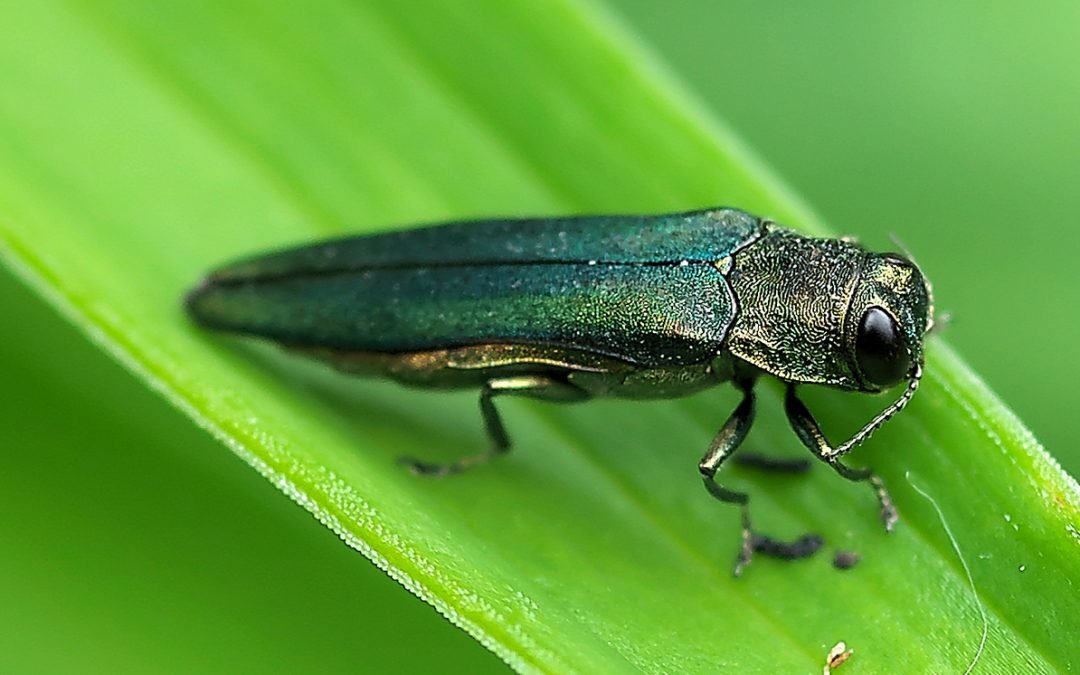The Emerald Ash Borer: The Threat to North American Ash Trees
Emerald Ash Borer, Agrilus planipennis
The emerald ash borer (Agrilus planipennis), also known as EAB, is a green beetle native to northeastern Asia that feeds on ash species. It was first discovered in North America near Detroit, Michigan, in 2002. The insect has since spread to many parts of the continent and is considered one of the most severe threats to North American ash trees.
The adults are about half an inch long and have distinctive, metallic-green wing covers. The larvae (immature stage) of the beetle are white with black heads and can be up to an inch long. Emerald ash borers typically lay their eggs in cracks in the bark of ash trees. The larvae hatch and spend the subsequent few months tunneling under the bark, causing extensive damage to the tree. Adult emerald ash borers are active from May to September. They are attracted to the leaves of ash trees, on which they feed. Females will then lay their eggs on the underside of leaves, and the cycle repeats. The insect has no known natural predators in North America, and there is no effective chemical control. Ash trees are essential to many North American ecosystems, and their loss would severely affect the environment.
If you have an ash tree on your property, it is essential to be aware of the signs of EAB infestation:
Dying branches in the upper crown of the tree
D-shaped exit holes in the bark
S-shaped tunnels under the bark
Heavy woodpecker activity
If you notice any of these symptoms, please get in touch with a certified arborist or tree care professional for further assistance. There are a few options available for treating EAB-infested trees, but the most important thing you can do is select resistant species for planting in the future.

